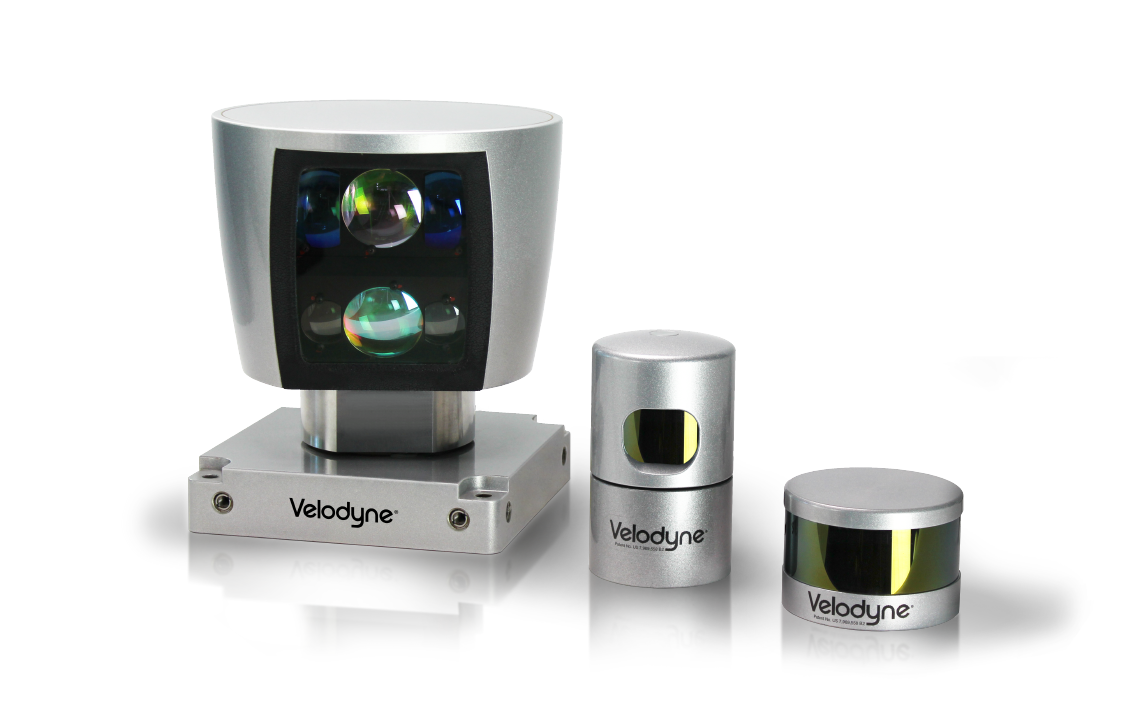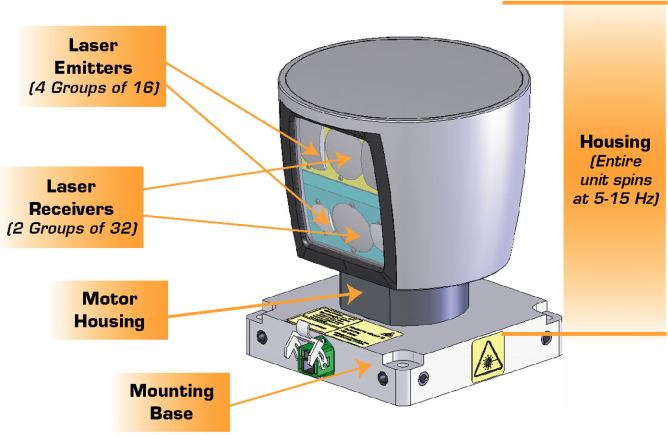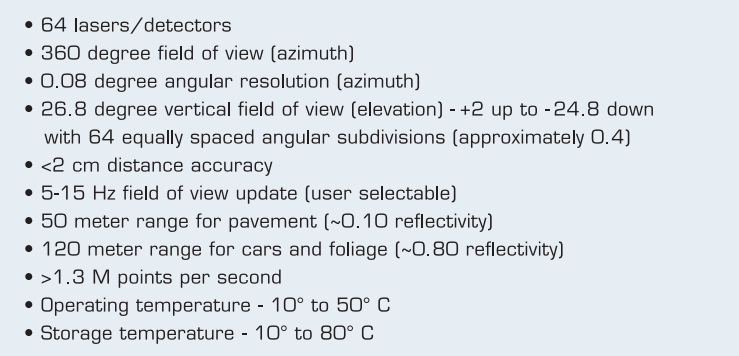04. Lidar Sensors
Header Text
Lidar Sensors
ND313 Michael Intv 06 Lidar For Autonomous Vehicles V2
Lidar
Lidar sensing gives us high resolution data by sending out thousands of laser signals. These lasers bounce off objects, returning to the sensor where we can then determine how far away objects are by timing how long it takes for the signal to return. Also we can tell a little bit about the object that was hit by measuring the intensity of the returned signal. Each laser ray is in the infrared spectrum, and is sent out at many different angles, usually in a 360 degree range. While lidar sensors gives us very high accurate models for the world around us in 3D, they are currently very expensive, upwards of $60,000 for a standard unit.
- The Lidar sends thousands of laser rays at different angles.
- Laser gets emitted, reflected off of obstacles, and then detected using a receiver.
- Based on the time difference between the laser being emitted and received, distance is calculated.
- Laser intensity value is also received and can be used to evaluate material properties of the object the laser reflects off of.
Lidar Sensors

Velodyne lidar sensors, with HDL 64, HDL 32, VLP 16 from left to right. The larger the sensor, the higher the resolution.
Lidar Schematic
Here are the specs for a HDL 64 lidar. The lidar has 64 layers, where each layer is sent out at a different angle from the z axis, so different inclines. Each layer covers a 360 degree view and has an angular resolution of 0.08 degrees. On average the lidar scans ten times a second. The lidar can pick out objects up to 120M for cars and foliage, and can sense pavement up to 50M.

VLP 64 schematic, showing lidar emitters, receivers, and housing.
Lidar Schematic

VLP Sensor Specifications
How many Lidar Points?